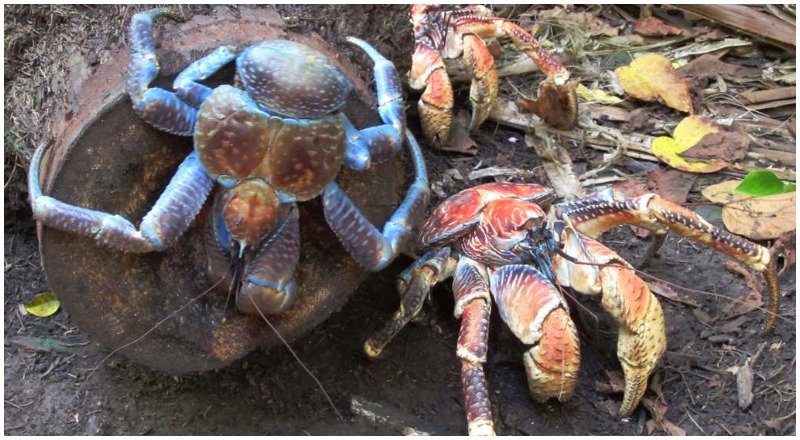The coconut crab is so frightening that the famous naturalist Charles Darwin once dubbed it “monstrous.” This enormous crab grows to approximately three feet long and is thought to be the biggest arthropod living on land.
Furthermore, scientists studying these immense creatures believe that they could have been responsible for the mysterious disappearance of the aviation pioneer Amelia Earhart.

The coconut crab is no ordinary crustacean. Its main asset, aside from its disturbing appearance, is its immense strength. Despite weighing no more than nine pounds, it can carry up to six times its own bodyweight. In addition, according to the BBC, the coconut crab has incredibly strong pincers, exerting as much force on its unwitting prey as the bite of a lion’s jaws.
Coconut crabs, as the name suggests, primarily feed on coconuts, and it is here that their powerful claws offer a distinct advantage.
Climbing high in the trees, the crabs use their strength to knock coconuts from the branches, and then dismantle the hard, gnarled shells with their pincers.
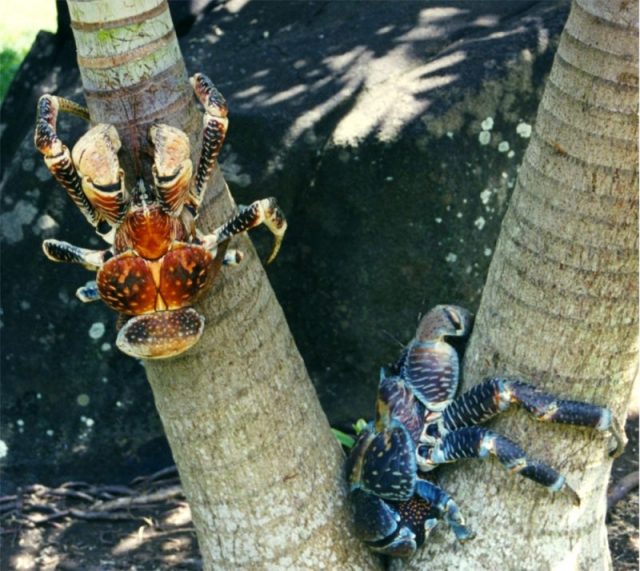
However, when coconuts cannot be found, these versatile creatures have been known to target other types of prey. According to the BBC, scientists studying the crabs were shocked to discover that they would also attack birds resting in the treetops.
In a graphic, violent scene, the crabs were observed to break the birds’ wings using their pincers, and then drag them down to their underground burrows.
They also eat carrion, and have been known to dismantle the corpses of other coconut crabs for food.
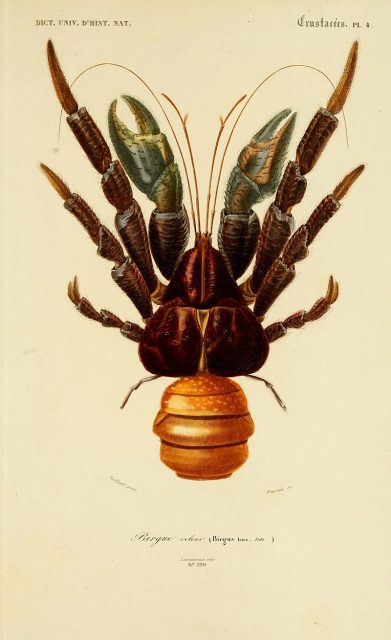
Coconut crabs rarely attack humans. However, according to the BBC, when they feel threatened, they may display aggressive behavior and can be quite dangerous.
A number of incidents have been reported in the South Pacific, where coconut crabs make their homes, in which humans have accidentally put their hands inside a burrow where a coconut crab was living.
The coconut crabs reportedly attacked, and in some cases managed to rip off several fingers or even a whole hand, using only the strength of their immense pincers.
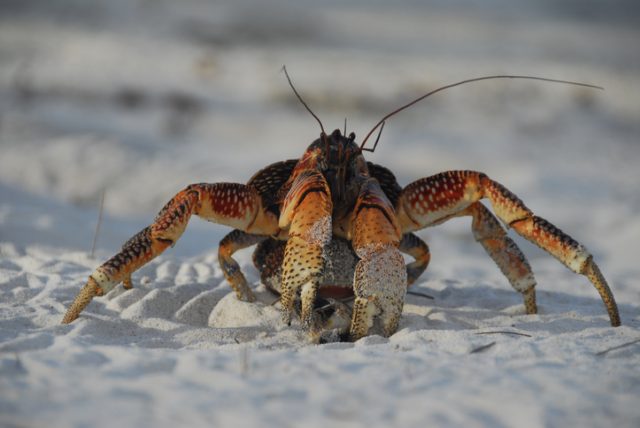
Coconut crabs are a rare and unusual species, and we currently know relatively little about their lives, habitats and behavior. However, as more data is gathered, scientists have begun to speculate that these powerful crustaceans may hold clues about the disappearance of one of the world’s greatest aviation pioneers.
Amelia Earhart was a renowned pilot, adventurer and writer, and is known as the first female aviator to fly solo across the Atlantic. During an attempt to circumnavigate the globe in 1937, she disappeared, along with her navigator Fred Noonan, near Howland Island in the South Pacific. The circumstances of her death remain a mystery, as the bodies and the plane were never recovered.
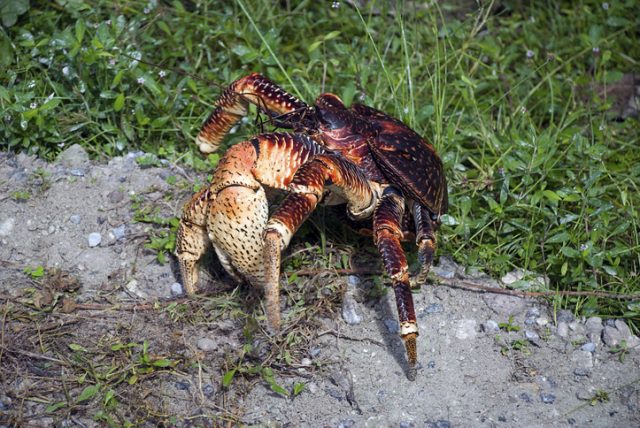
In 1940, however, a badly fractured skeleton was found on Nikumaroro Island, close where Earhart is thought to have crashed. It has been speculated that Earhart’s body washed up on the beach, either dead or badly injured, and was subsequently dismembered by a group of coconut crabs.
In 2007, a team of scientists investigating the behavior of coconut crabs tested this theory by leaving a pig carcass in the same location that the body had been found. Within moments, a large number of coconut crabs emerged on the beach, crawling out of their nearby burrows, and tore the pig to shreds.
Although this theory is unsubstantiated, and it’s likely that we will never know whether the skeleton is that of Earhart, it is clear that it is certainly possible that her corpse was mutilated by the island’s resident coconut crabs. The colossal strength of these crabs is enough to crush human bones and devour a corpse in a matter of minutes.
The coconut crab might be intimidating, but human encroachment into its natural habitat means that it is classed as an endangered species. Numbers of these fascinating creatures have dwindled in recent years. As we begin to learn more about the lives and capabilities of these remarkable animals, we must work harder to ensure that they continue to survive.
